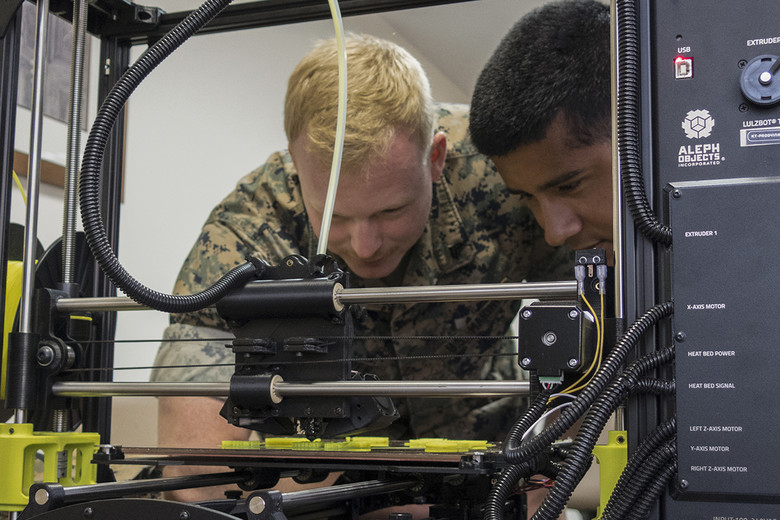James “Hondo” Geurts, Assistant Secretary of the Navy, Research, Development and Acquisition, has said that the force is seeking $23 million in funding for its 2020 3D printing efforts. According to Inside Defense, Guerts told the House Armed Services Intelligence, Emerging Threats and Capabilities Subcommittee, that the funds would go toward developing appropriate certification for 3D printed parts, potentially creating a database that groups all the objects together.
“A lot of that is so we can network all of our 3D printed files together, create models […]” he said. “One of the challenges is how to certify a part with a 3D printed technology that’s been certified traditionally. That’s where that research is going.”
Furthermore, Guerts added that the Navy foresees an allocation of $66 million to 3D printing as part of the under the Department of Defense (DOD) Future Years Defense Program (FYDP). Updated each year, the FYDP gives a projection of the DOD’s funding, manpower and force structure needs over the next 5 years.

3D printing for repair and modernization
The U.S. Armed Forces, and particularly the U.S. Navy, is heavily invested in 3D printing. In 2018 alone, the U.S. Office of Naval Research (ONR) allocated $2.6 million for the introduction of metal additive manufactured parts; Lockheed Martin entered a $5.8 million contract with the force; and, by the end of the year Naval Air Systems Command (NAVAIR) estimated its fleet relied on the use of 1,000 3D printed parts. Most recently, the Marine Corps Systems Command (MCSC) set up an Advanced Manufacturing Operations Cell to provide 24/7 3D printing support, and the Navy has been applying the technology to upgrade various ships in its fleet. This aligns with Guerts annual shipbuilding plan, which was directed to Naval Sea Systems Command (NAVSEA) last year. In this directive, Guerts asked NAVSEA to compile a ship repair and maintenance plan for the next 30 years of its fleets’ lifetime.
“The idea is, we have this 30-year shipbuilding plan, that’s only as good as our ability to repair and modernize those ships once we build them,” explained Guerts, “So what we’d like to do is create the companion plan that takes the shipbuilding plan and what we have in inventory, then forecast and plan for all the repair and modernizations that we’ll have to do.”

In the interest of U.S. defense
The news of the U.S. Navy’s $23 million 3D printing allocation is especially heartening considering the U.S. Bureau of Industry and Security‘s (BIS) recent proposal to add further restrictions to the export of “emerging technologies.” In the most recent update on this proposal, several 3D printing industry stakeholders, including Stratasys, Boeing and Airbus, responded to the change with some concern about its effect on U.S. research excellence.
In the U.S. Navy’s full budget request for 2020, the force has allocated a total of $20.4 billion for Research and Development efforts. On relation to Science and technology (S&T) research in particular, the Navy explains: “Science and technology (S&T) research is vital to provide for future technologies that support innovative capabilities in shipbuilding, aviation, weapons, and ground equipment.”
“Investment in research and development (R&D) is also fundamental in the Columbia Class Program, Virginia Payload Module, FFG(X) [both submarines], unmanned systems, electromagnetic warfare, and protecting our national interests across space and cyberspace.”
Voting now open for the 2019 3D Printing Industry Awards. For all of the latest additive manufacturing news and updates subscribe to the 3D Printing Industry newsletter, follow us on Twitter and like us on Facebook.
Featured image shows U.S. Marines training with Building Momentum to use 3D printers. Photo via LulzBot.



